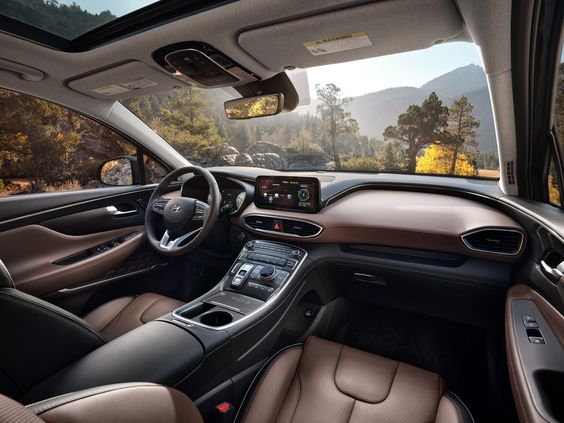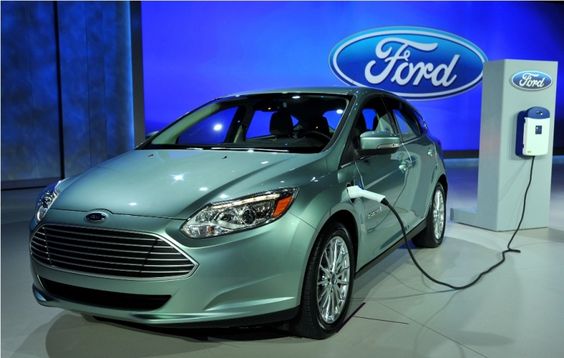Physical Address
60 Ekwema Cres, Layout 460281, Imo
Physical Address
60 Ekwema Cres, Layout 460281, Imo

A hybrid car which interesting includes the plug-in hybrid and the self-charging hybrid among others, combines at least one electric motor with a gasoline engine to propel the car.
The system includes regenerative braking, which recaptures energy during deceleration. The electric motor and gas engine can operate independently, collaboratively, or in sequence.

Toyota Hybrid car: Picture Source- Pinterest
This usage results in reduced gasoline consumption, leading to improved fuel efficiency.
In some cases, the addition of electric power can enhance overall performance.
Hybrids incorporate a high-voltage battery pack, distinct from the conventional 12-volt battery, which is replenished by capturing energy during deceleration through regenerative braking.
The gas engine of a hybrid car is also employed to charge and maintain the battery.
Various hybrid designs are used by car manufacturers to achieve diverse goals, ranging from maximizing fuel efficiency to minimizing costs.
Mild hybrid cars (MHEVs), as the name implies, represent the initial stage on the electrified vehicle spectrum.

Picture Source-Pinterest
similar to traditional engine cars, they incorporate a small electric designed to enhance fuel economy and reduce emissions.
Also, In certain scenarios, the electric motor has the capability to propel the car from a stationary position before the petrol or diesel engine engages to sustain forward movement.
Furthermore, this feature is particularly advantageous in traffic situations where vehicles often operate at low speeds.
Overall, MHEVs provide an efficient and eco-friendly option by integrating a modest electric motor into the conventional engine-powered framework.
A self-charging hybrid car represents a progression beyond the mild, featuring a larger electric motor powered by a compact battery.
Also, this electric motor operates in conjunction with the engine to enhance overall efficiency.
Moreover, Distinguished from mild hybrids, proper self-charging hybrids can initiate movement solely on electric power, similar to certain mild-hybrids, but they can attain higher speeds before the engine activates.
Additionally, self-charging hybrids, as implied by their name, have the capability to recover energy during braking, channeling it back.
Importantly, these hybrids do not require external charging; the battery is recharged through the vehicle’s own kinetic energy recovery system, eliminating the need for a plug-in charging mechanism.
Plug-in hybrid electric vehicles (PHEVs) represent the next advancement by incorporating a larger electric motor alongside an engine, accompanied by a more substantial battery to power it.

Phev Hybrid Car: Picture Source-Pinterest
As the name indicates, the battery in PHEVs requires external charging, akin to fully electric cars.
Notably, the advantage lies in the enhanced power and extended range of PHEVs. The electric motor can independently handle normal driving, reaching speeds of up to and beyond 70 mph, for considerable distances.
Some PHEVs boast an electric-only range exceeding 40 miles, suitable for daily commutes or short trips like grocery shopping.
The versatility of a PHEV is evident as it retains the engine, ensuring continued operation for longer distances when needed.
Ultimately, this dual power source provides flexibility, allowing drivers to enjoy the benefits of electric power while having the reassurance of a traditional engine for extended journeys.
HEVs (Hybrid Electric Vehicles) employ both an internal combustion engine and a battery-powered electric motor to achieve optimal fuel efficiency and minimize emissions.

Also, the additional power from the electric motor enables the use of a smaller combustion engine, contributing to the desired outcomes of high fuel economy and reduced emissions.
On the other hand, PHEVs (Plug-in Hybrid Electric Vehicles) primarily operate on electricity, drawing power from an electric motor.
However, they are equipped with an internal combustion engine that comes into play when the battery charge is low or when there is heightened electricity demand elsewhere in the vehicle, such as in heating or air conditioning systems.
Therefore, this dual power in PHEVs provides flexibility and ensures continuous vehicle operation where electric power alone may be insufficient.
Hybrid cars, in general, do not require charging, while plug-in hybrid vehicles (PHEVs) can be charged using charging equipment.
However, even PHEVs employ alternative methods beyond electric charging to sustain the vehicle.
Some hybrid cars, distinct from PHEVs, do not require charging and are not designed to be plugged in.
Instead, the battery is charged through a dual process: first, through the internal combustion engine, and second, via “regenerative braking.”
During regenerative braking, the vehicle’s electric motor acts as a generator, capturing and converting energy typically lost during braking into electric energy to recharge the battery.
This unique charging mechanism allows hybrid cars to operate efficiently without the need for external charging infrastructure.
The charging speed of electric vehicles is influenced by factors such as battery size, electric vehicle type, and the remaining charge level in the battery. It is essential to understand the various types of electric vehicles:

Picture Source-Pinterest
For Battery Electric Vehicles (BEVs), they are recharged from external power sources. Plug-In Hybrid Electric Vehicles (PHEVs) have the ability to recharge externally, and they are equipped with a smaller internal combustion engine to recharge the battery.
Fuel Cell Electric Vehicles (FCEVs) convert hydrogen into electricity to power an electric motor. They do not recharge from an external source; they use compressed hydrogen gas stored in a tank on the vehicle.